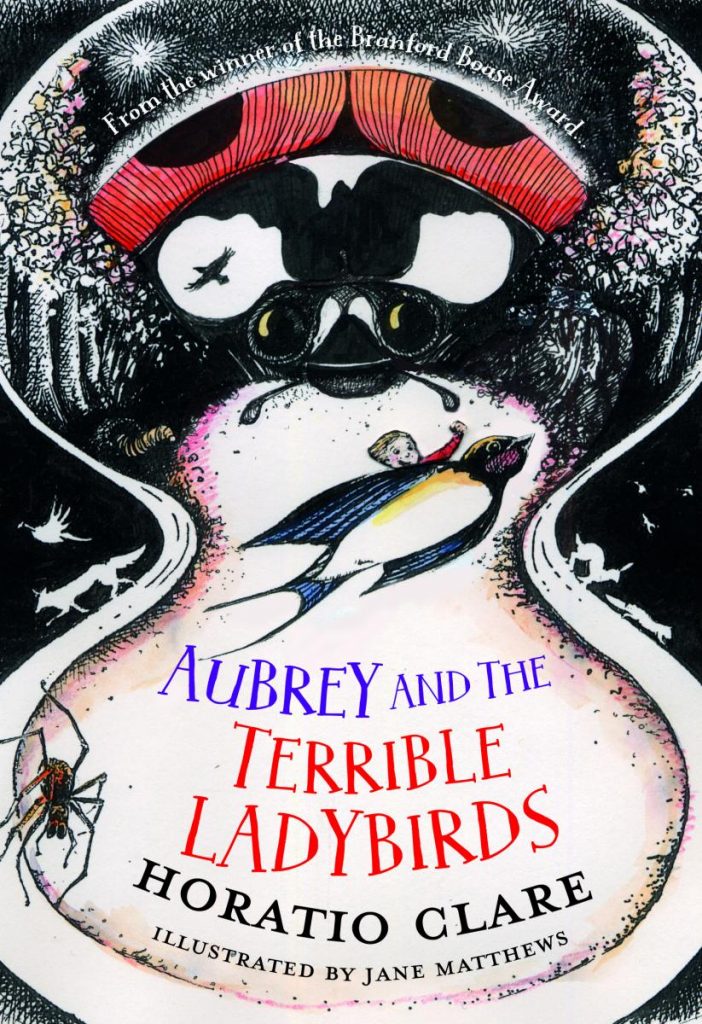
Aubrey and the Terrible Ladybirds
Horatio Clare / Illustrated by Jane Matthews
Firefly Press
I love sharing books with Noah. We read together at bedtime, snuggled on beanbags in his bedroom. Last year, we read Aubrey and the Terrible Yoot, Horatio Clare’s first foray into children’s stories; a deeply affecting and skillfully crafted novel with touches of fantasy and lots of heart. It instantly became a favourite book for both of us and we have been anticipating the arrival of these ladybirds for a while, and there was absolutely no way I was going to let him read it without me.
Aubrey can talk to animals, but that’s a moot point. At the start of his Easter holidays, he is shrunken to the size of a ten pence coin and is visited by a spider asking him to save the world. You see, a family of ladybirds has arrived from overseas – they are not like the domestic ladybirds and are not welcomed. What starts as a small argument between ladybirds (“They’re not from round here. They’re big and weird. Go back to where you came from!”) develops into an extremely unattractive fracas involving all the animals of Rushing Wood.
There are big themes at work here, with issues of tolerance and respect at the core. I can’t help but revel in the irony that Clare uses animals to teach lessons about humanity. Aubrey discovers that insects on the continent are being poisoned by farming methods, which in turn affects the food chain – “If you don’t help us the insects will vanish. The plants won’t grow and the animals won’t eat. And humans are animals too.” This is termed ‘The Great Hunger’ and is the reason the spider asks Aubrey to save the world.
You may be thinking that this all sounds very hardgoing, but Clare handles it all with a lightness of touch and great humour: From hapless spy Mr Ferraby the neighbour who reports back to his incredulous wife, to the inspired footnotes dotted throughout the book which support our understanding but also take the reader down surreal cul-de-sac*. The plethora of insects, birds and mammals who make up the cast of this novel are also great fun with their stereotype personas.
There is brilliant storytelling too – from the heart-stopping descriptions of Aubrey clinging to the back of Hirundo the swallow as he tries to outsmart the high speed aerial manoeuvres (and talons) of a Hobby, to the impassioned speech of French human child Pascale.
Aubrey and the Terrible Ladybirds is a fantastic book. Nine year old Noah “absolutely loved it” because it was full of awesome adventure and has slotted it next to Terrible Yoot in his Top Ten books. Undoubtedly, The Ladybirds will have a wider appeal than Yoot, bringing it to the attention of a bigger audience. That audience will understand that Aubrey and the Terrible Ladybirds is a book about the universal truths of love, compassion and kindness – to each other, to the environment and to the animals.
Aubrey and the Terrible Yoot can be purchased from your local independent bookshop, or online.
We are grateful to Firefly Press who provided a copy of this book in exchange for an honest review.
FOOTNOTE
*This is the correct plural of cul-de-sac, coming from the French, literally meaning “bottom of the bag”. Some dictionaries allow cul-de-sacs but this is madness. In this case, it is used metaphorically to express an action that is an impasse**.
**Impasse describes a situation in which progress is impossible.